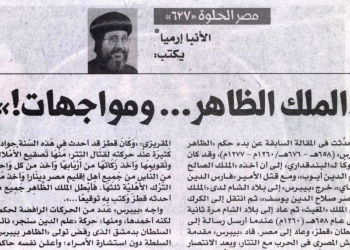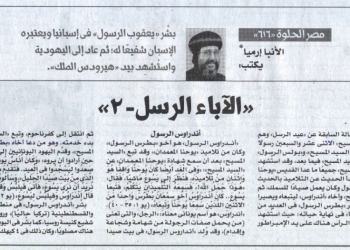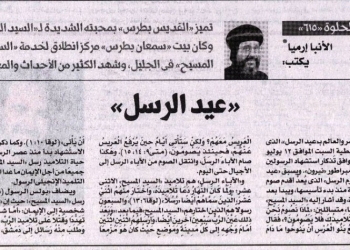In the previous article, we tackled the time of Caliph Al Radi and his brother Caliph Al Muttaqi Billah’s rule (329-333 AH) (940-944AD), who was deposed by Tuzun (the emir of emirs), to assign his brother Al Mustakfi instead of him, ending, thus, the era of the Turks, and launching the era of the Buyids, which lasted for nearly a century (334-447 AH) (946-1055 AD).
Al Mustakfi’s rule did not last for long; he sat on the caliphate’s throne for one year and nearly four months. As per the historians, “he was helpless, as Tuzun (the emir of emirs) was the controller of everything, the caliph then was of a weak character, unable to oppose the opinions and orders of the emir of emirs… In his era, the Caliphate ended up in a dangerous state of deterioration…”! In 334 AH (946 AD), Tuzun died in Baghdad, the soldiers chose Ibn Shiraz, one of their commanders to be an emir, he came to Baghdad and was assigned by Al Mustakfi as the emir of emirs.
The affairs of Baghdad were not stable, as the country had been besieged from all sides. The situation was terrible for its people: food was cut off, the people starved, there had been a lot of theft and looting, and many have migrated to neighboring cities. As the situation grew worse and more dangerous, Ibn Shiraz sent to Nasser Al Dawla, the Emir of Bani Hamdan, asking him for help in return for abdication. Yet, the latter was unable to help the former due to his preoccupation with the wars in defense of the raids-vulnerable Azerbaijan, besides his wars with the Ikhshidis in the Levant. In the meantime, Ahmed bin Buya managed to seize the city of Wasit and then moved to Baghdad to seize it. When he approached the city, the caliph fled with his emir of emirs, and the Turkish soldiers fled to Mosul.
Mo’ez Al Dawla bin Buya
Ahmed bin Buya came to Baghdad in 334 AH (946 AD), met Caliph Al Mustakfi and pledged allegiance to him, while Al Mustakfi ordered the titles of the Buyas to be put on the currency. He gave Ahmed bin Buya the title Mo’ez Al Dawla, his brother Aliya the title Imad Al Dawla, and his brother Al Hassan was given the title Rokn Al Dawla. Since then, the caliph had no longer kept authority over the state, it was the Buyas who were controlling all its affairs for over one century, through which they managed to eliminate the Turks’ influence, expel the Hamdanis from Mosul, and ruling over the Arabian Peninsula, Iraq and the Western non-Arab countries.
Caliph Al Mustakfi ruled for no longer than forty days: as Mo’ez Al Dawla ousted him, assigning his cousin Al Fadl instead of him, giving him the title Al Motie’ Billah. Al Motie’ Billah ruled for nearly twenty nine years and a half (334 – 363 AH) (946-974 AD) ended by being ousted from power; while as for his ruling era, he maintained no power at all, but the Buyas were the de facto rulers.
Mo’ez Al Dawla took exclusive hold of the power and was the ultimate ruler of the state. The historians described that era as follows: “In his era, the influence of the soldiers increased; they assaulted the individual wealth, grabbing it from the hands of its owners. Mo’ez Al Dawla assigned his commanders and friends over the entire villages, they oppressed people, and neglected the agriculture that the Feudalism destroyed the prosperity of Iraq… Sedition spread in the country, the unrest prevailed due to rivalries and disputes between the soldiers of the Turks and those of the Dylamites, and due to the religious clashes that reached its climax in Baghdad its neighboring countries of Iraq…” religious clashes had intensified in Baghdad. The state was split in constant conflicts, described by Al Khodari Bik: “By this split, Baghdad, Persia and Rey became a field of frequent disturbances among the commons; the Sultan supported one team, while the caliph supported the other team. It is known that all animosities can be treated, except for the religious originated ones, and the greatest of them is that spread between two sides of the same religion.” And … stories about beautiful Egypt never end!
The General Bishop
Head of the Coptic Orthodox Cultural Center


 العربية
العربية











